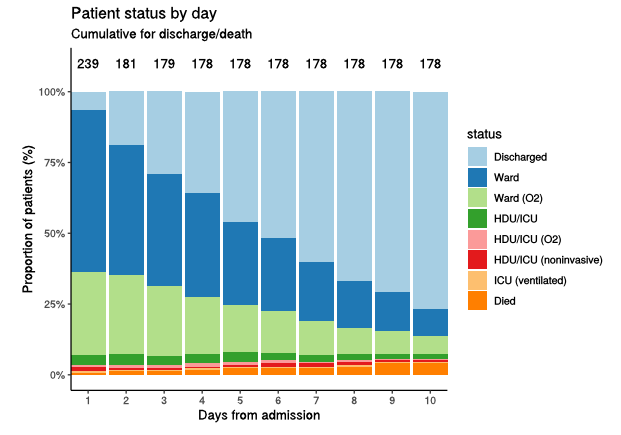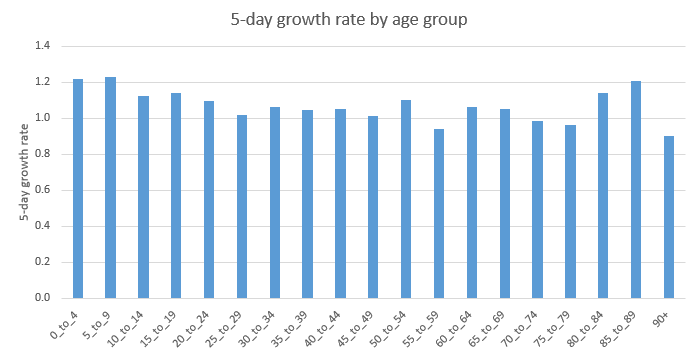
thanks to the person who pointed me towards this report: assets.publishing.service.gov.uk/government/upl… (you know who you are!) - lots of interesting data. In particular it does support the anecdotal evidence that average length of stay in hospital is shorter in recent admissions: see this chart 1/3 

...and compare to the older data in the chart below. So after 10 days, about 75% have been discharged in the recent data, compared to 40% in the older data. (but note deaths are lower in the recent data, which slightly offsets the benefits for hospital bed occupancy). 2/3 

what's not entirely clear to me is whether this is just the result of a lower average age of patients being admitted - see below- (and would reverse if more older cases arrived), or whether it says something more fundamental about the progression of covid disease with Delta. 3/3 

(of course it could also say something about admissions criteria and how they evolve when pressure on hospitals is high or low)
• • •
Missing some Tweet in this thread? You can try to
force a refresh









